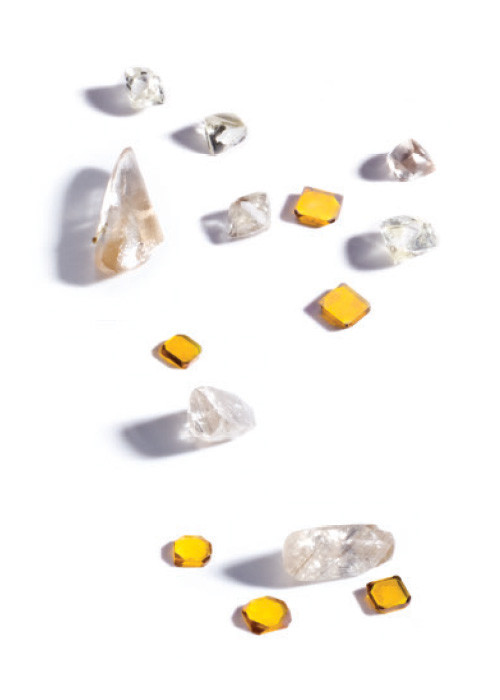
Diamond is the hardest material on earth, and makes an excellent edge for machining a wide range of materials. Natural diamond has traditionally been used to make diamond tools, but now there are also various types of synthetic diamond that are often as good as or better for certain machining applications. Our team can help guide you on the best diamond type for your specific application.
Single crystal natural diamond
A natural diamond has the benefit of being a single crystal and an extremely fine edge can be produced with the right quality stone. The key is to use near-gem quality diamond, which is what K&Y uses for their natural turning tools. We do not use lesser quality diamond to save a few dollars, it is simply not worth risking the integrity of our tools and our reputation.
Single crystal synthetic diamond
Synthetic diamonds have the same chemical makeup as a natural diamond, and can even be more consistent since the growth process is controlled. This consistency often leads to a more uniform tool life. They are created in laboratories thanks to innovative processes that tend to replicate as perfectly as possible the natural structure of the diamond. Following are the two general categories of synthetic diamond:
High-pressure / high temperature (HPHT) synthetic diamond
The HPHT method is one of the two methods used in the production of synthetic diamonds. It consists in the combination of very high pressure (5 GPa) with very high temperature (1,500°C) using a press specific to the process. The original recipe designed by GE in the 1950’s has an amber color to it due to the substituted nitrogen. Theoretically, this nitrogen can help with tool wear in some applications. More recently there are companies that are producing pure white HPHT material for jewelry, and this material can also be used for making tools but is more expensive.
Chemical Vapor Deposition (CVD) synthetic diamond
CVD diamond was developed in the 1980’s, and more recently has become more widely available as an alternative to natural diamond. When it was first developed, it was a polycrystalline material (which is also useful for certain applications). Now pure single crystal CVD is available that is extremely consistent and has no internal stresses. Since it is grown in a lab under vacuum rather than under high pressure, there are no hard spots and growth aberrations that are sometimes found in natural diamond.
Contact our team of experts to know which crystal is best for your application.